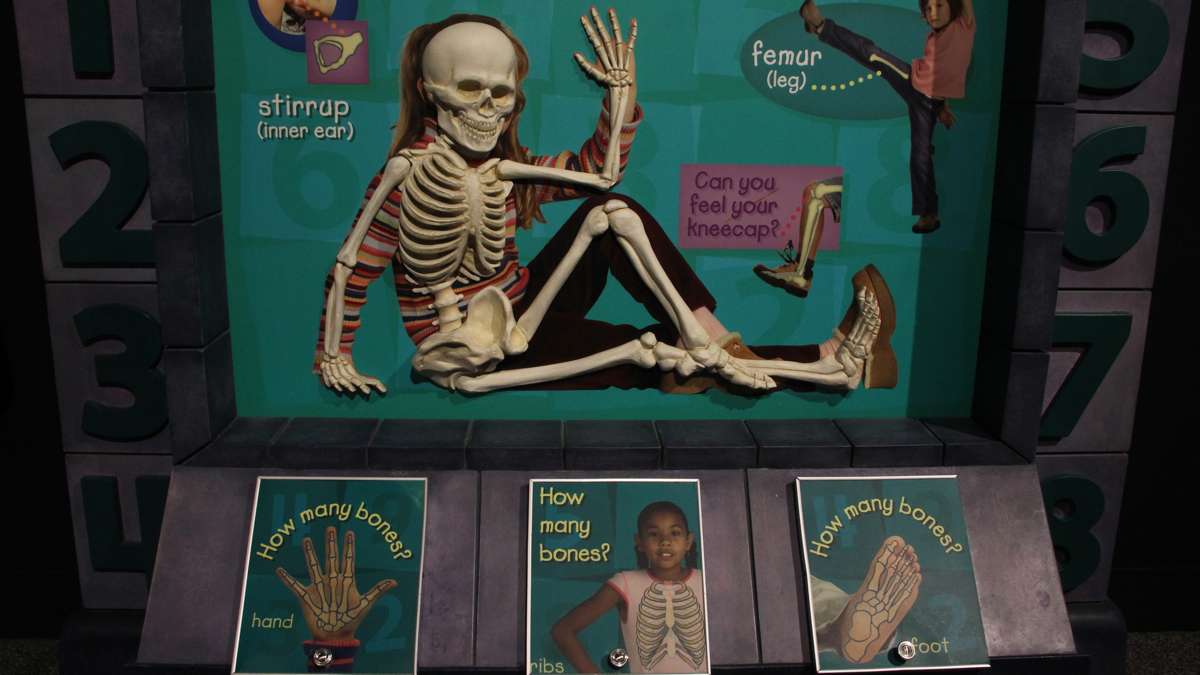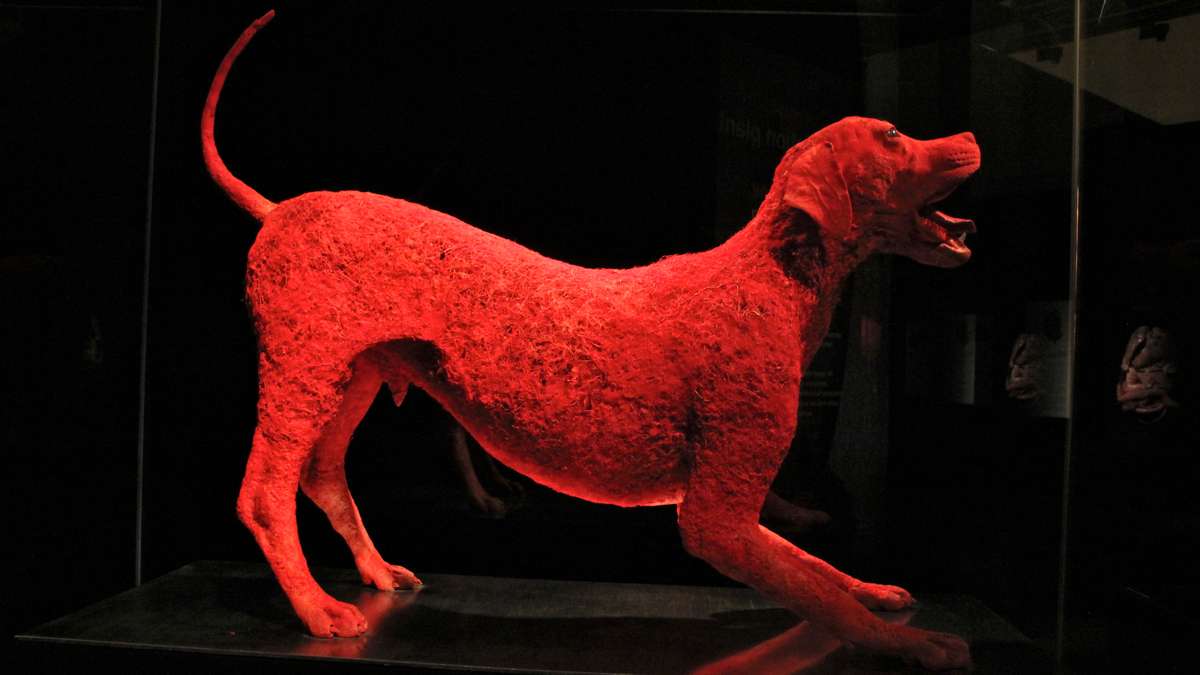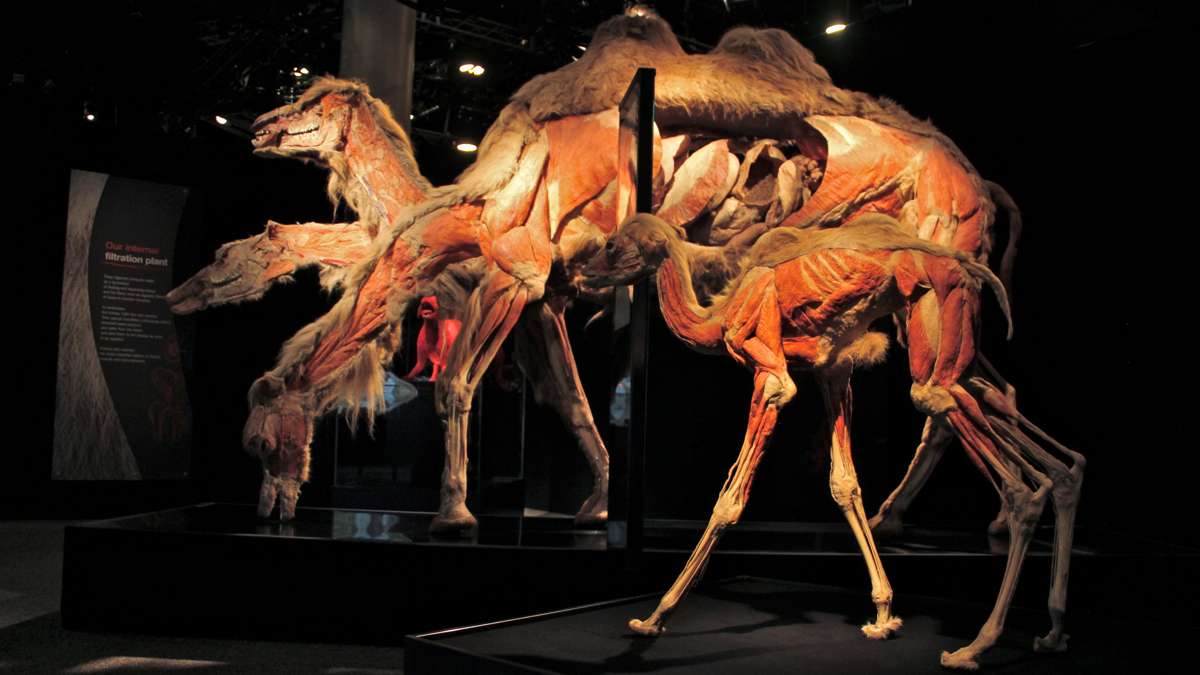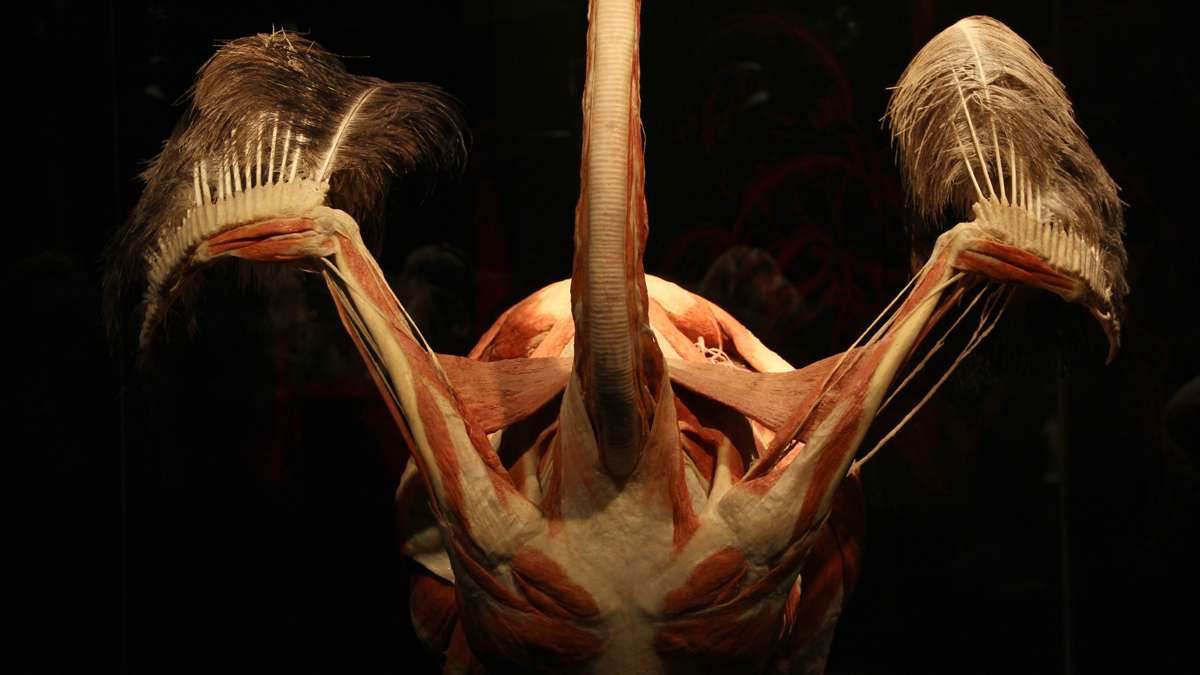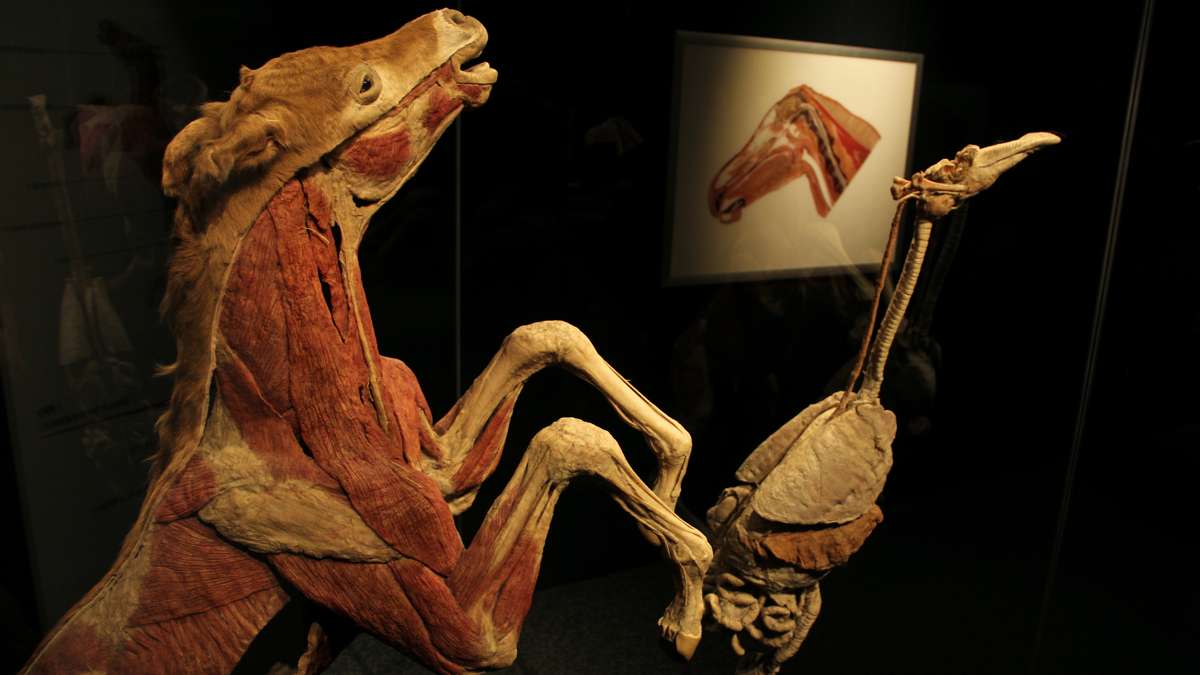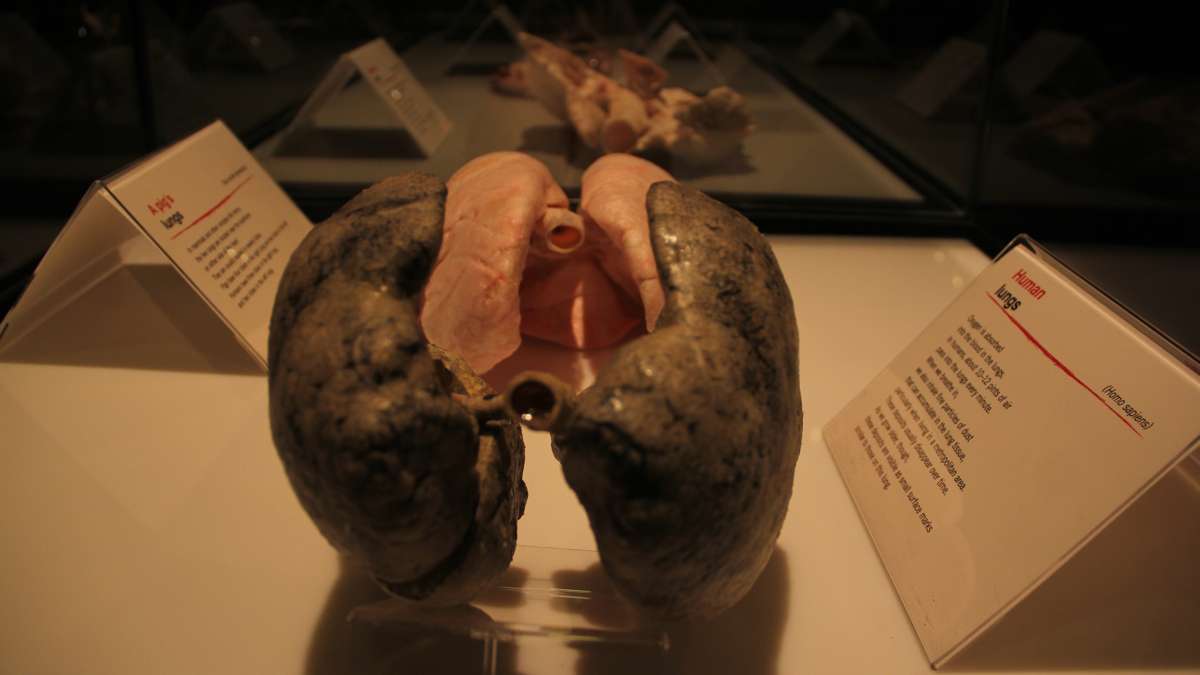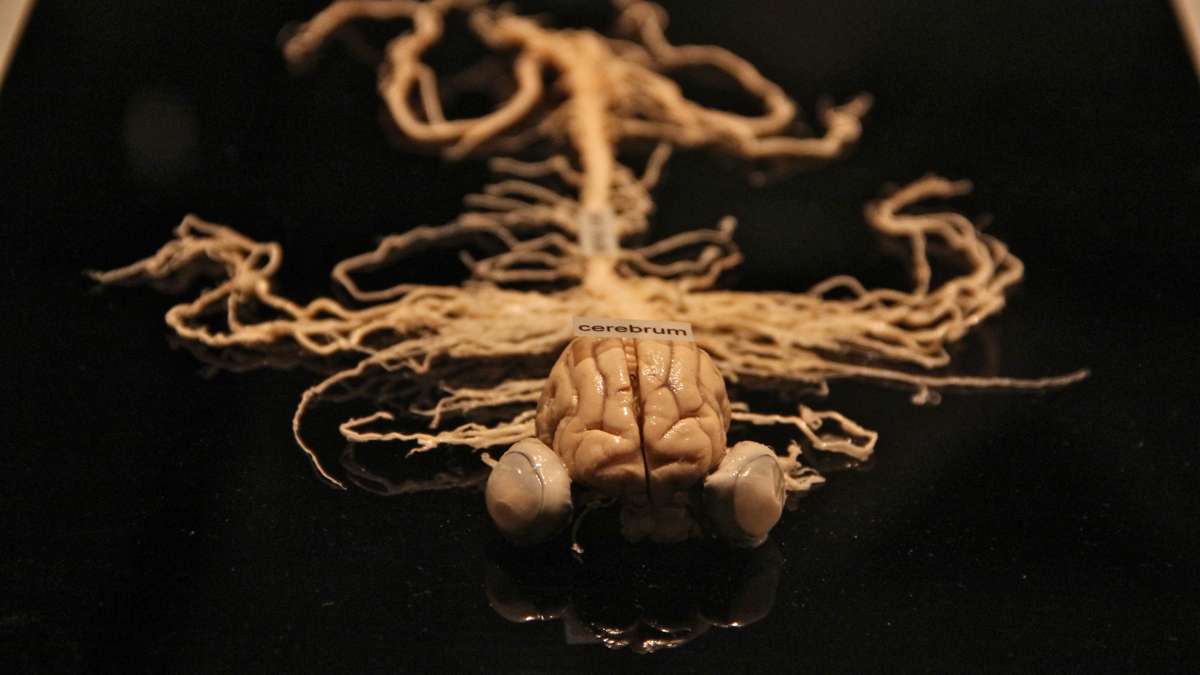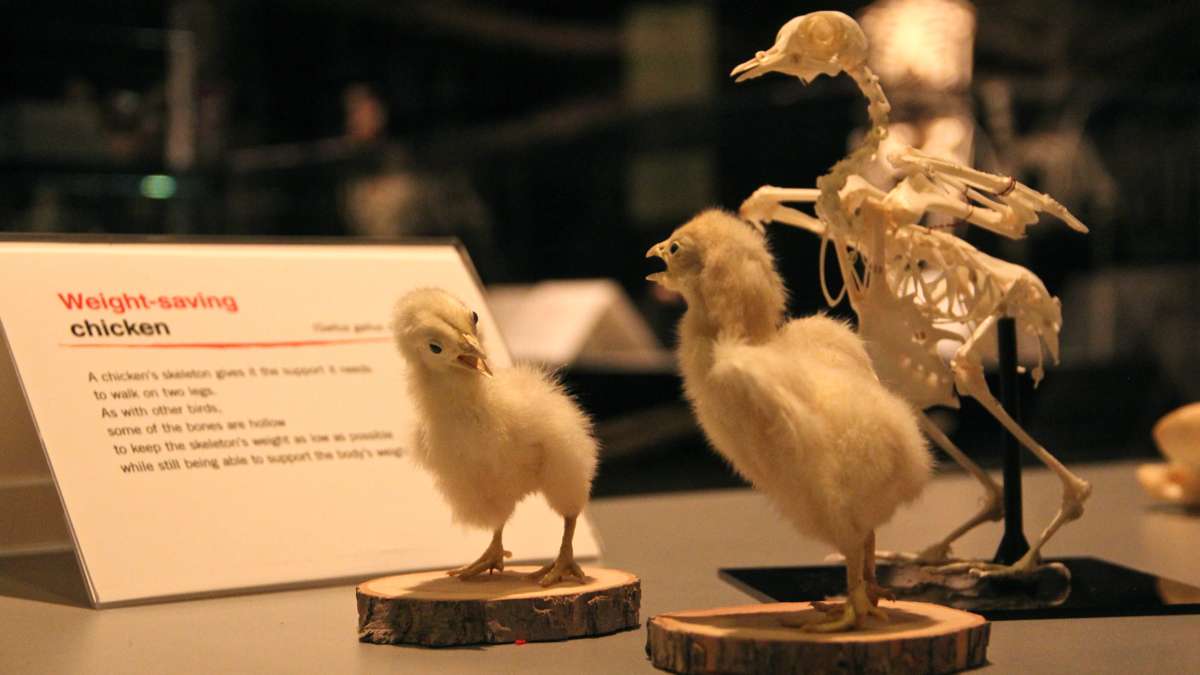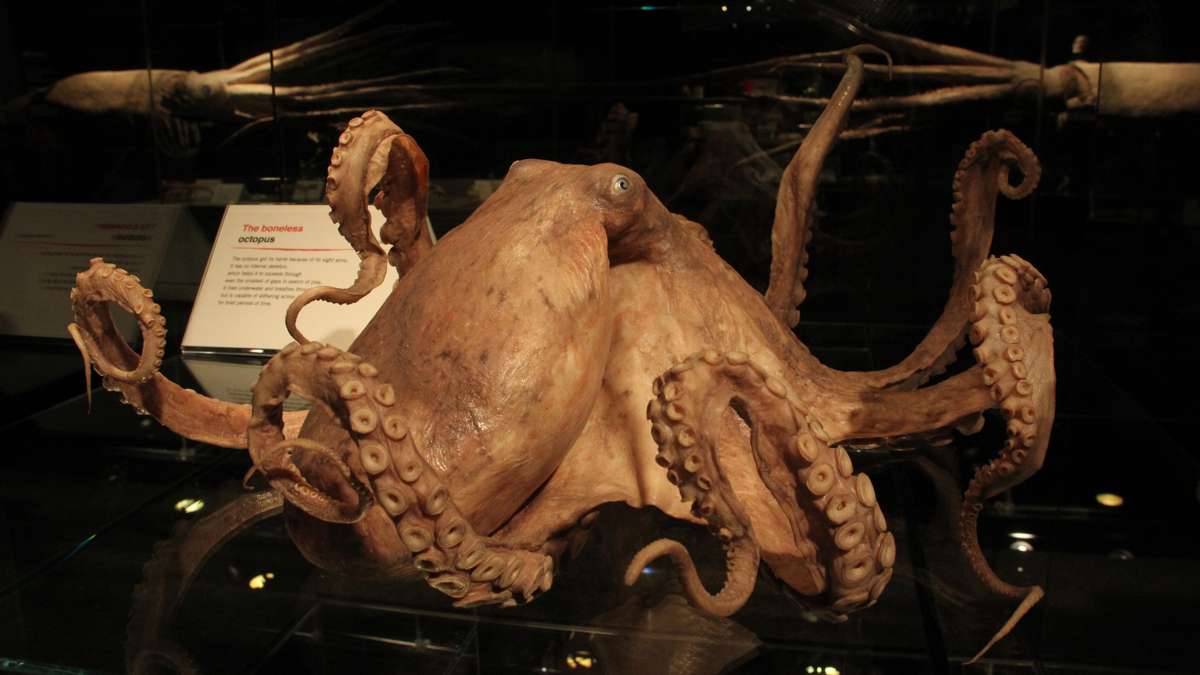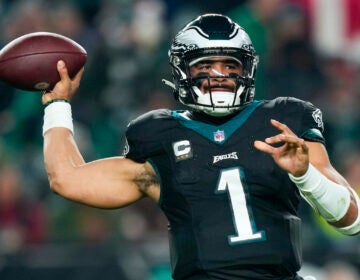From furry creatures to skinless animals, Franklin offers anatomy lessons [photos]
The Franklin Institute is opening “Body Worlds: Animal Inside Out,” an exhibition featuring dead animals that have been flayed, dissected, and preserved by a chemical process that turns tissue into plastic.
At the same time, across the hall from “Body Worlds,” the institute has opened “Sesame Street Presents: The Body,” which uses simple games with characters including Bert, Ernie and the Count to teach kids how their bodies work. Both exhibitions aim to illustrate anatomy.
To walk across that hall — from the bright brownstones of “Sesame Street” to the dramatically dark abattoir of “Body Worlds” — requires a few small steps and a big change in mind.
“I think people have that mindset coming in, saying, ‘Oh my God, these are real animals,'” said Franklin Institute president and CEO Larry Dubinski. “It really takes your breath away for a minute. Your mindset has to change. At times, as you walk through this exhibit, you lose focus that these are real. But they are.”
The “Body World” exhibits range from small frogs and birds to very large bulls and giraffes. The head and neck of a full-sized camel has been sliced laterally in three sections, each repositioned to mimic the movement of drinking water. A running ostrich, cut down to its muscular system, stares into the face of a doppelganger, reduced to its cardiovascular system.
Previous “Body Worlds” exhibitions have featured a few dissected animal carcasses as set-pieces for human bodies. Dr. Angelina Whalley, the exhibition designer and wife of “Body Worlds” creator Dr. Gunther von Hagens, said by 2010 the company had enough animal specimens to give them their own show.
The animals were given to the company by private donors, zoos, and wildlife-management teams. The exhibition creators have declared no animals were harmed or killed for the purposes of the show.
An evolutionary progression
The show begins with a humble carp, sliced laterally and pressed between glass. The progress of the exhibition (smaller than the ambitious human anatomy “Body Worlds” previously at the Franklin Institute), roughly follows evolution, from marine life to large land mammals. The last rooms have the large, show-stopping specimens: the running giraffe, the drinking camel, the charging bull.
The point is to show that animals and humans have very similar biological systems. However, when it comes to the process of dissection, animals are (naturally) a whole different animal.
“It’s very similar, but in the details it can be quite different,” said Whalley. “Particularly with large specimens, we had to admit there is not too much detailed literature available. Nobody has dissected an animal of that size in great detail.”
Missing from “Animal Inside Out” is the degree of creative license the “Body Worlds” team allowed itself with human bodies. In the past, “Body World” attendees could be thrilled, or repulsed, by a body holding its own skin bundled up in its outstretched hands, or the brain of a horse held aloft by its rider, who has his own brain exposed.
The animals are more conservatively posed in basic running, leaping, or charging positions.
“Our intention was — in the human exhibits — to come up with lifelike poses, to make it more relevant for our visitors,” said Whalley, standing amid the animals in the exhibition. “These are very lifelike. The reindeer, it looks like they are really running. The bull over there, it’s very energetic. The giraffe is running, posed on one leg. I think that’s dramatic, too.”
This is the third time the Franklin Institute has hosted a “Body Worlds” exhibition. It is one of the most popular attractions the Franklin has ever had, second only to “King Tut.”
WHYY is your source for fact-based, in-depth journalism and information. As a nonprofit organization, we rely on financial support from readers like you. Please give today.



